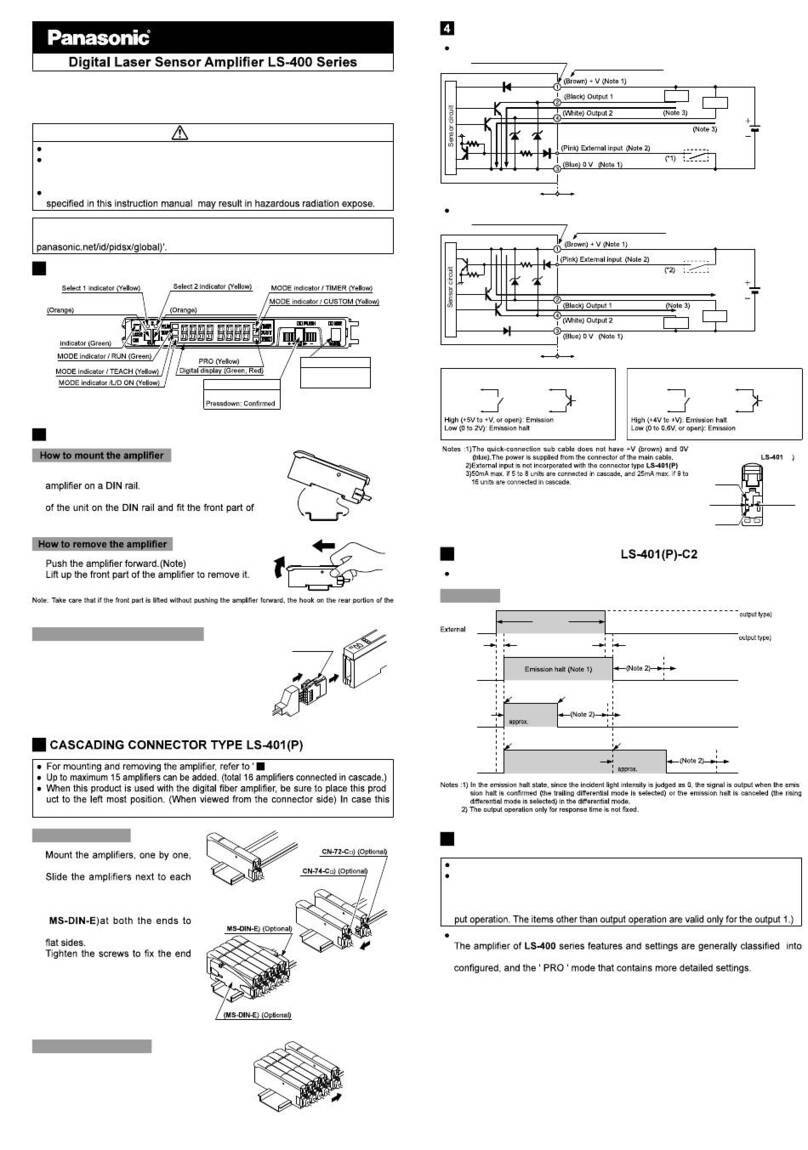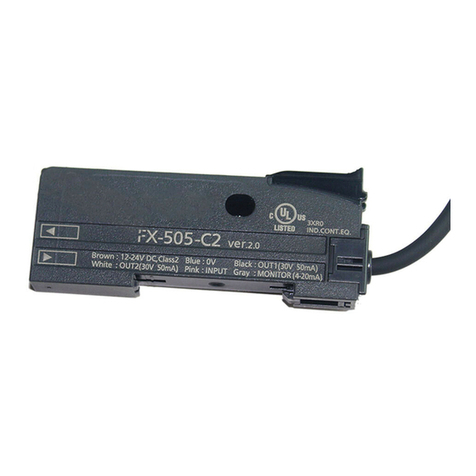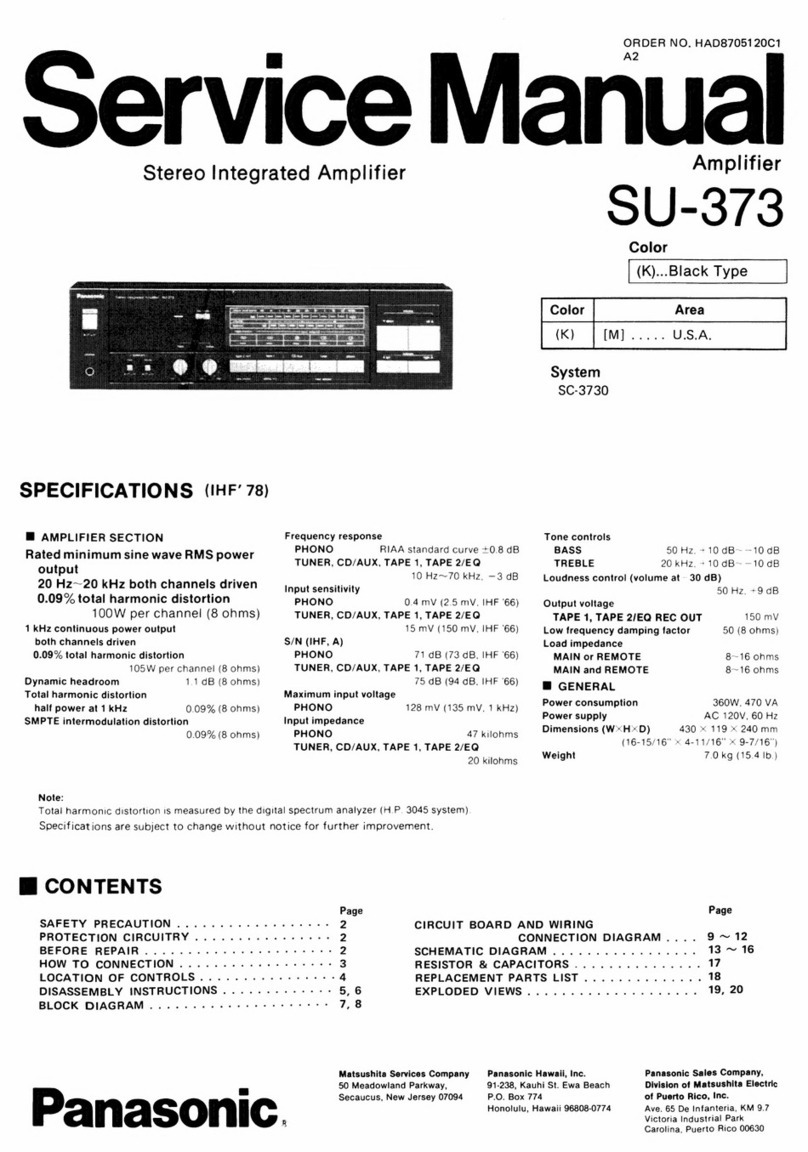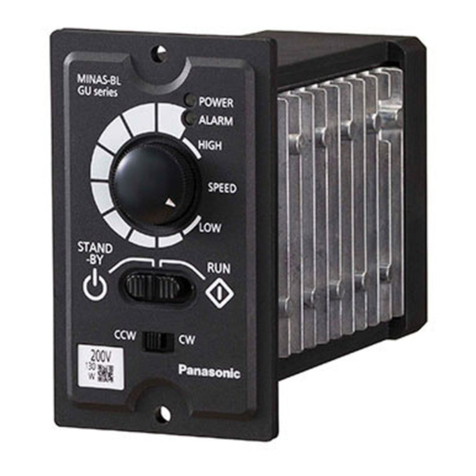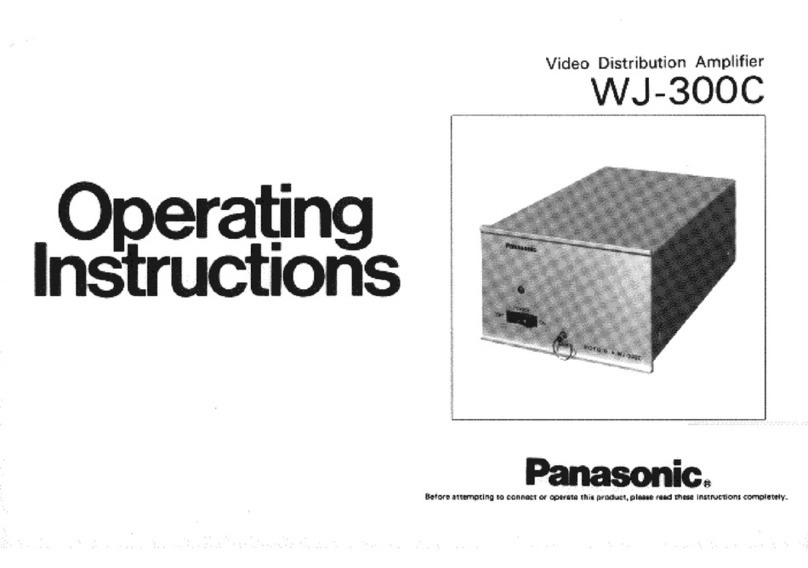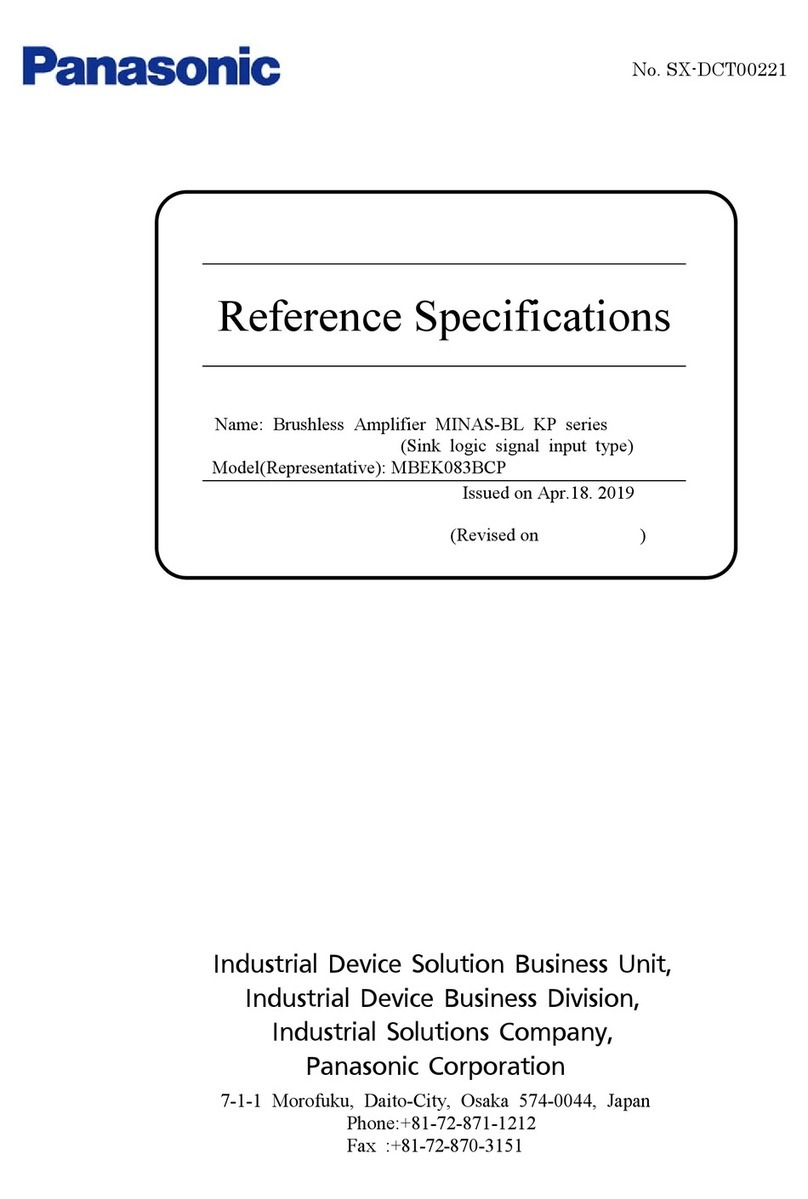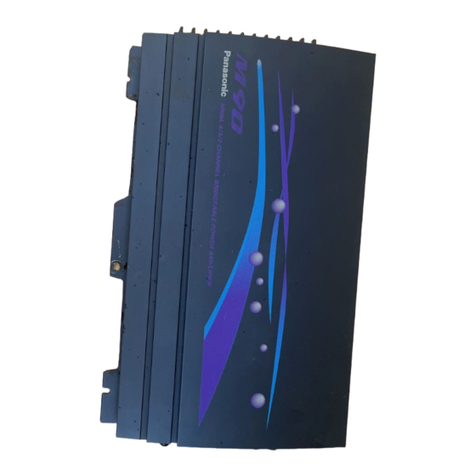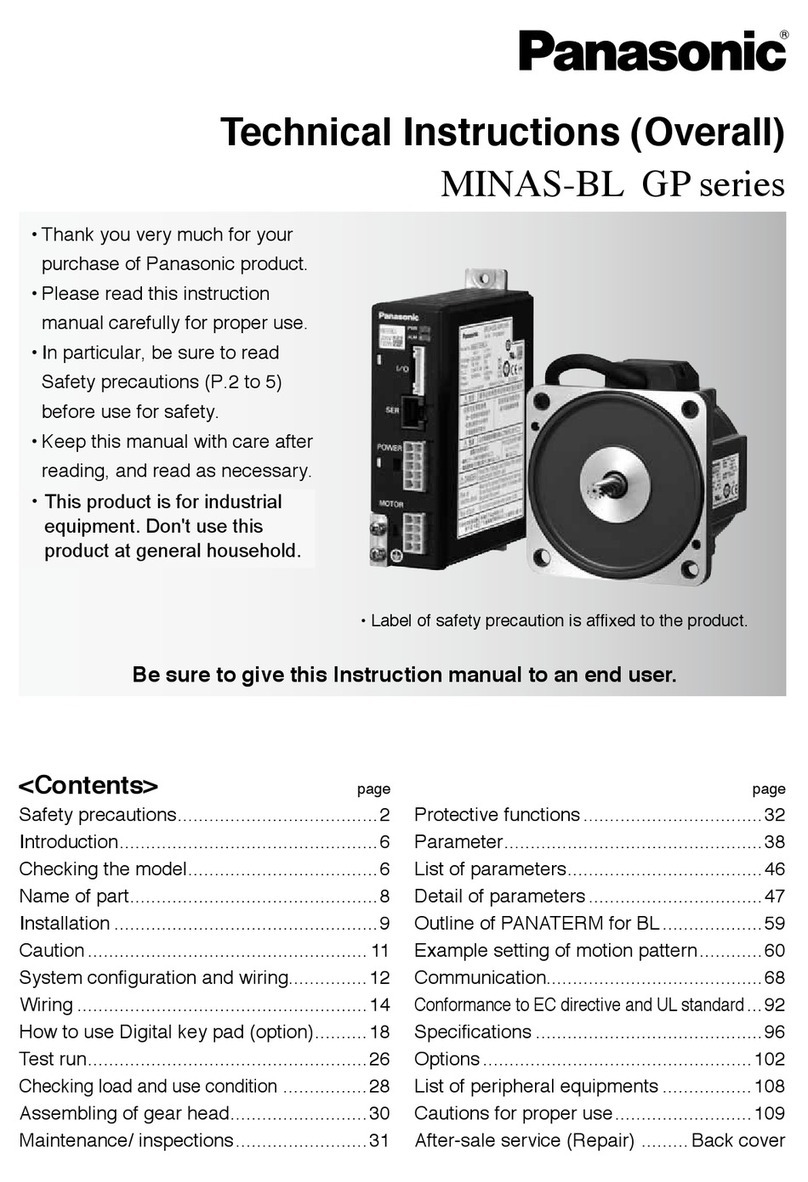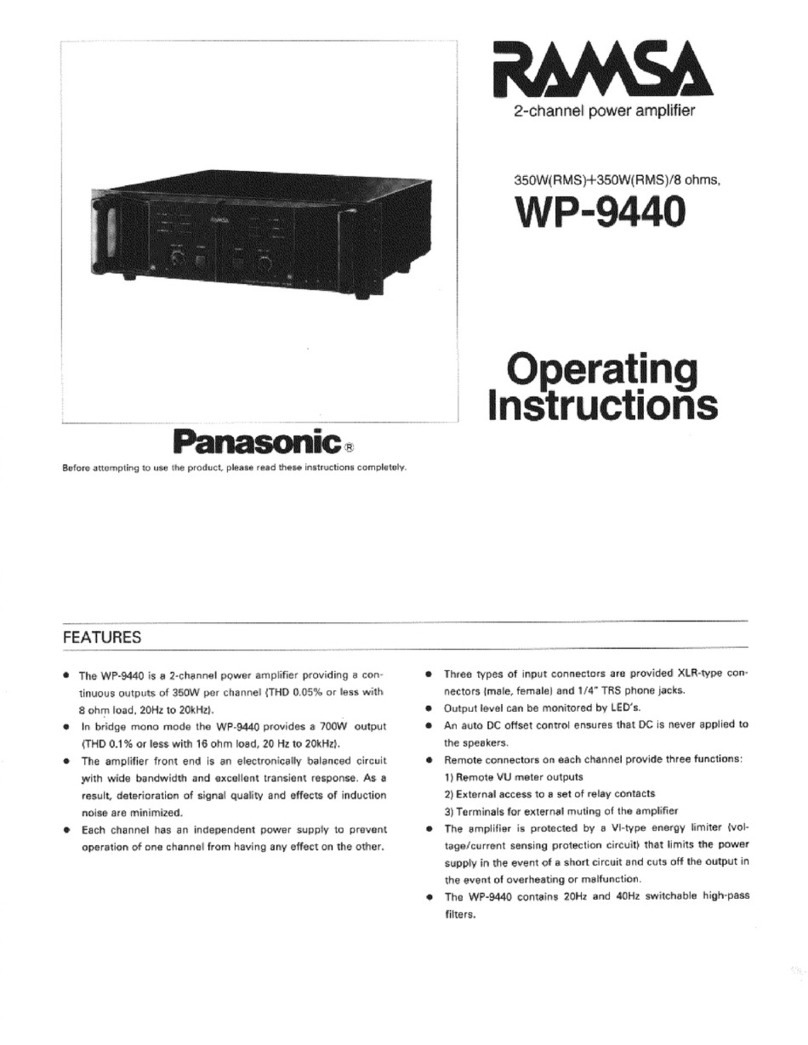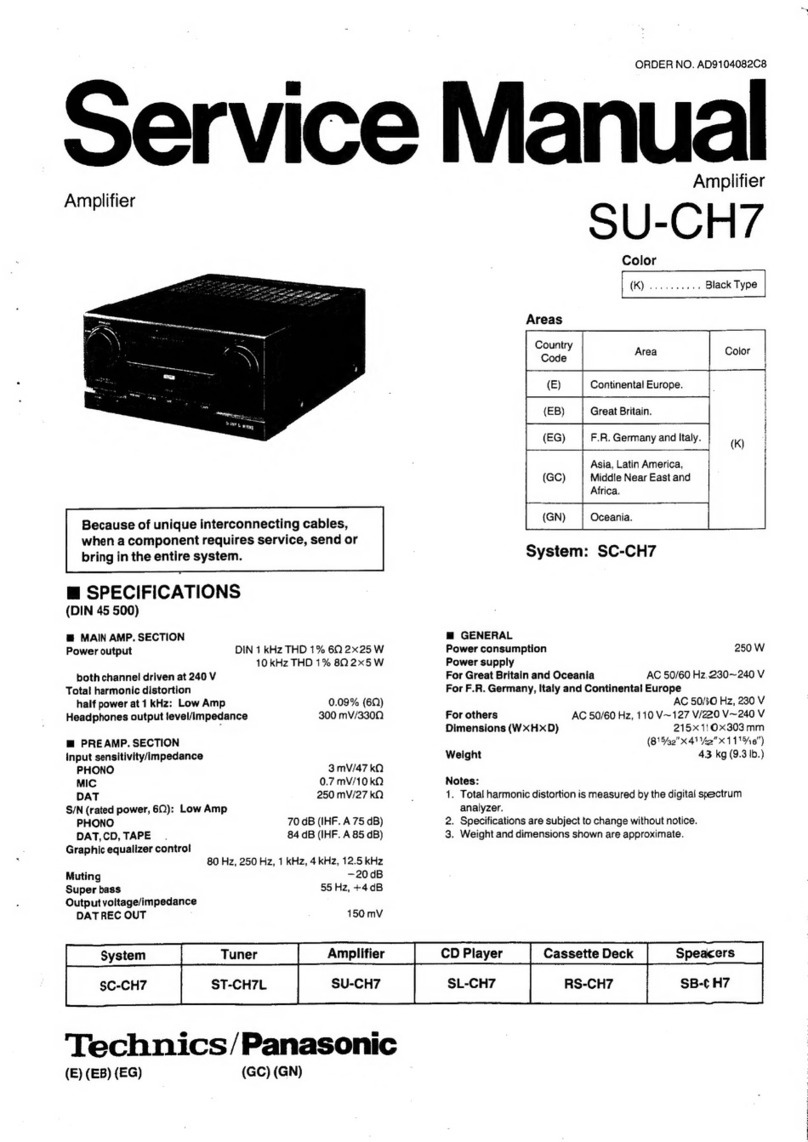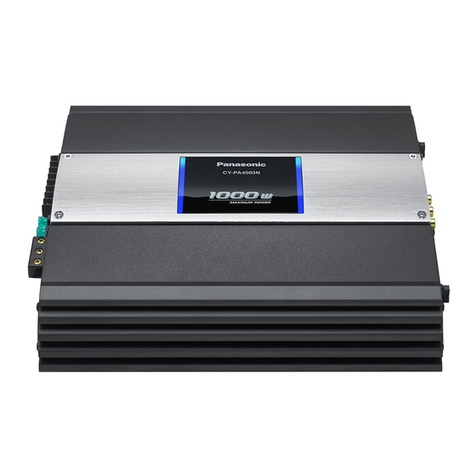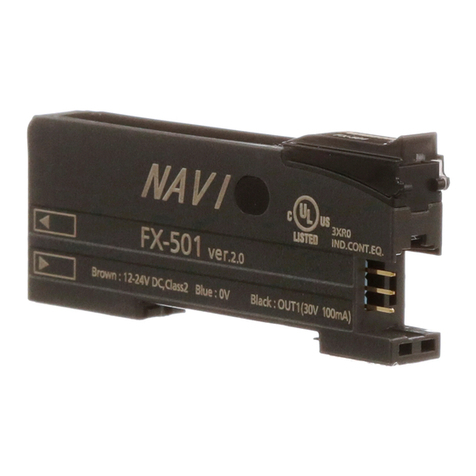
13
ERROR INDICATION
●In case of errors, attempt the following measures.
Error
indication Description Remedy
EEPROM is broken or reached the end of its working life. Please replace the product.
EEPROM writing error
Load of the sensing output is short-circuited causing an
over-current to ow. Turn OFF the power and check the load.
14
SPECIFICATIONS
Type Connection type Cable type
NPN output PNP output NPN output PNP output
Model No. FX-551 FX-551P FX-551-C2 FX-551P-C2
Supply voltage 12 to 24V DC+10
‒15 % Ripple P-P10% or less
Power consumption
Normal operation: 960mW or less (current consumption 40mA or less at 24V supply voltage)
Eco mode: 680mW or less (current consumption 28mA or less at 24V supply voltage)
Sensing output
< NPN output type >
NPN open-collector transistor
• Maximum sink current: 100mA (Note 1)
• Applied voltage: 30V DC or less
(Between sensing output and 0V)
• Residual voltage: 2V or less (Note 2)
[At 100mA (Note 1) sink current]
< PNP output type >
PNP open-collector transistor
• Maximum source current: 100mA (Note 1)
• Applied voltage: 30V DC or less
(Between sensing output and +V)
• Residual voltage: 2V or less (Note 2)
[At 100mA (Note 1) source current]
Output operation Switchable either Light-ON or Dark-ON
Short-circuit protection
Incorporated
Response time
(Note 3)
FAST: 60μs or less, STD: 250μs or less, LONG: 2ms or less,
U-LG: 4ms or less, HYPR: 24ms or less, Selectable
Interference revention
function
Incorporated
Emission frequency selection method
(Functions at emission frequency 1, 2, 3 or 4)
Protection IP40 (IEC)
Ambient temperature
(Note 4)
-10 to +55°C (when 4 to 7 units are installed: -10 to +50°C, when 8 to 16 units are
installed: -10 to +45°C) (No dew condensation or icing allowed), Storage: -20 to +70°C
Ambient humidity 35 to 85% RH, Storage: 35 to 85% RH
Material
Enclosure: Polycarbonate, Key: Polyacetal, Protective cover: Polycarbonate
Cable (Note 5) 0.2-mm23-core cabtire cable (2 m) provided
Weight (Main body only)
Approx. 15 g Approx. 60 g
Notes: 1) 50mA in the case 5 or more connection-type units are connected in series
2) When 5-m-long one-touch cable (optional) is used with connection-type units
3) Response tisme varies depending on the emission frequency setting. Regarding the response time in the
case “ ” or “ ” is selected, refer to <PRO3> in “
12
PRO MODE.”
4) In the case of connection type: When connected in series.
In the case of cable type: When adherence-mounted.
5) Cable is not provided with the connection-type product. Be sure to use the following cables (optional).
< Connection type >
Cable
Cable length 1m Cable length 2m Cable length 5m
Main cable Sub cable Main cable Sub cable Main cable Sub cable
FX-551□CN-73-C1 CN-71-C1 CN-73-C2 CN-71-C2 CN-73-C5 CN-71-C5
15
CAUTIONS
●This product has been developed / produced for industrial use only.
● Make sure that the power supply is OFF while adding or removing the ampliers.
●Take care that if a voltage exceeding the rated range is applied, or if an AC power
supply is directly connected, the product may get burnt or be damaged.
●Take care that short-circuit of the load or wrong wiring may burn or damage the
product.
●Do not run the wires together with high-voltage lines or power lines, or put them in
the same raceway. This can cause malfunction due to induction.
● The specication may not be satised in a strong magnetic eld.
●Verify that the supply voltage variation is within the rating.
●If power is supplied from a commercial switching regulator, ensure that the frame
ground (F.G.) terminal of the power supply is connected to an actual ground.
●In case noise generating equipment (switching regulator, inverter motor, etc.) is
used in the vicinity of this product, connect the frame ground (F.G.) terminal of the
equipment to an actual ground.
●The ultra long distance (U-LG, HYPR) mode is more likely to be affected by
extraneous noise since the sensitivity of that is higher than the other modes. Make
sure to check the environment before use.
●Do not use during the initial transient time (FAST, STD: 0.5 sec., LONG, U-LG,
HYPR: 1 sec.) after the power supply is switched ON.
●When extending the cable length, use a cable with a conductor cross-sectional
area of 0.3 mm2or more. Note that the maximum allowed cable length is 100 m.
However, in order to reduce noise, make the wiring as short as possible.
●
Set the power supply voltage by considering the voltage drop resulting from the
conduction resistance of the cable.
●Make sure that the cable joint is not applied with stress, such as strain caused by
forcible bending or pulling.
●This product is suitable for indoor use only.
●Avoid dust, dirt, and steam.
●Take care that the product does not come into contact with organic solvents such
as thinner.
●Take care that the product does not come into contact with strong acids or alkalis.
●Take care that the product does not come into contact with oil or grease.
●This product cannot be used in an environment containing inflammable or
explosive gasses.
●Never disassemble or modify the product.
●This product adopts EEPROM. Settings cannot be done 100 thousand times or
more because of the EEPROM’s lifetime.
http://panasonic.net/id/pidsx/global
Overseas Sales Division (Head Ofce)
2431-1 Ushiyama-cho, Kasugai-shi, Aichi, 486-0901, Japan
Phone: +81-568-33-7861 FAX: +81-568-33-8591
For sales network, please visit our website.
PRINTED IN JAPAN © Panasonic Industrial Devices SUNX Co., Ltd. 2017
